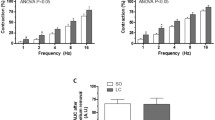Studies by electromagnetic flowmetry in acute experiments on cats under conditions of the open thoracic cage and artificial ventilation of the lungs showed that 64% of venous return via the vena cava posterior was realized at the expense of the splanchnic and 36% due to the musculocutaneous vessels (abdominal basin of the caudal vein). Epinephrine (20 μg/kg) increased the contribution of the splanchnic venous blood flow to the increase in the blood flow in the vena cava posterior and reduced the contribution of the musculocutaneous veins throughout the entire duration of systemic reactions: 84% of the blood flow increase in the vena cava posterior was due to the splanchnic and just 16% due to the musculocutaneous blood flow. Norepinephrine (10 μg/kg) resulted in a phase-wise involvement of the studied compartments in blood flow increase in the vena cava posterior. During the initial period of systemic reactions (coinciding with the maximum systemic BP rise) the contribution of the musculocutaneous compartment was 13% higher, while later (by the time of the maximum elevation of venous blood flow in the studied compartments) the contribution of splanchnic veins predominated constituting 89% of venous blood flow in the vena cava posterior. These results indicate that venous blood flow increase in the splanchnic vessels largely determined the formation of changes in the vena cava posterior blood flow in response to catecholamines.
Similar content being viewed by others
References
B. I. Tkachenko, Venous Circulation [in Russian], Leningrad (1979).
H. Cao, Z. Wu, X. Zhang, et al., Chin. Med. J. (Engl), 113, No. 12, 1108–1111 (2000).
W. Liu, H. Takano, T. Shibamoto, et al., Am. J. Physiol. Regul. Integr. Comp. Physiol., 293, No. 5, R1947-R1953 (2007).
C. F. Rothe, Physiol. Rev., 63, No. 4, 1281–1342 (1983).
M. Sekino, T. Makita, H. Ureshino, et al., Anesth. Analg., 110, No. 1, 141–147 (2010).
J. M. Stewart, M. S. Medow, L. D. Montgomery, et al., Am. J. Physiol. Heart Circ. Physiol., 289, No. 5, H1951-H1959 (2005).
S. Takeda, N. Sato, and T. Tomaru, Eur. J. Anaesthesiol., 19, No. 6, 442–446 (2002).
J. Truijen, M. Bundgaard-Nielsen, and J. J. van Lieshout, Eur. J. Appl. Physiol., 109, No. 2, 141–157 (2010).
Author information
Authors and Affiliations
Corresponding author
Additional information
Translated from Byulleten’ Eksperimental’noi Biologii i Meditsiny, Vol. 151, No. 4, pp. 364–367, April, 2011
Rights and permissions
About this article
Cite this article
Samoilenko, A.V., Yurov, A.Y. & Tkachenko, B.I. Contribution of Splanchnic and Musculocutaneous Vascular Compartments to the Formation of Blood Flow Volume in the Vena Cava Posterior during Catecholamine Treatment. Bull Exp Biol Med 151, 385–388 (2011). https://doi.org/10.1007/s10517-011-1337-5
Received:
Published:
Issue Date:
DOI: https://doi.org/10.1007/s10517-011-1337-5




